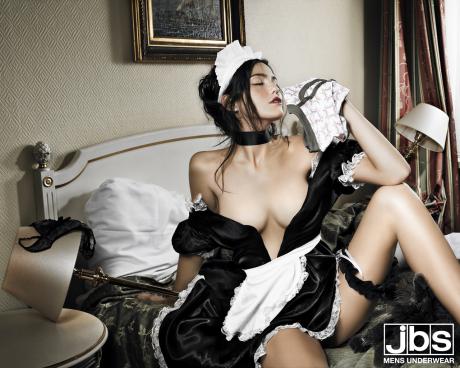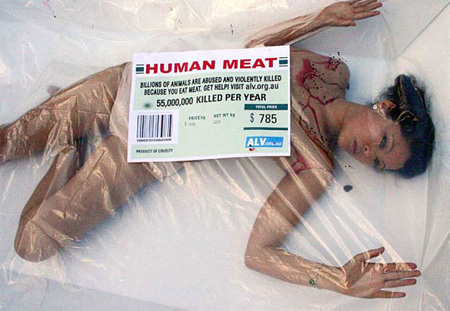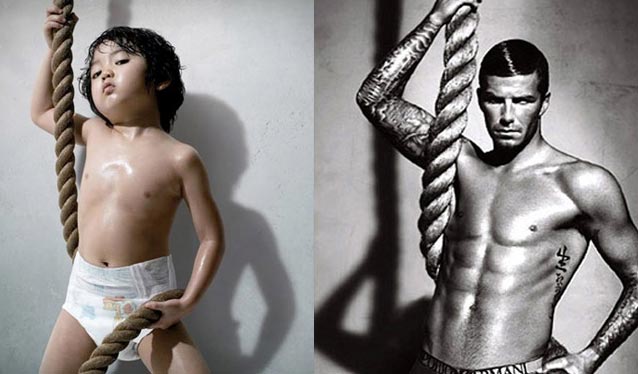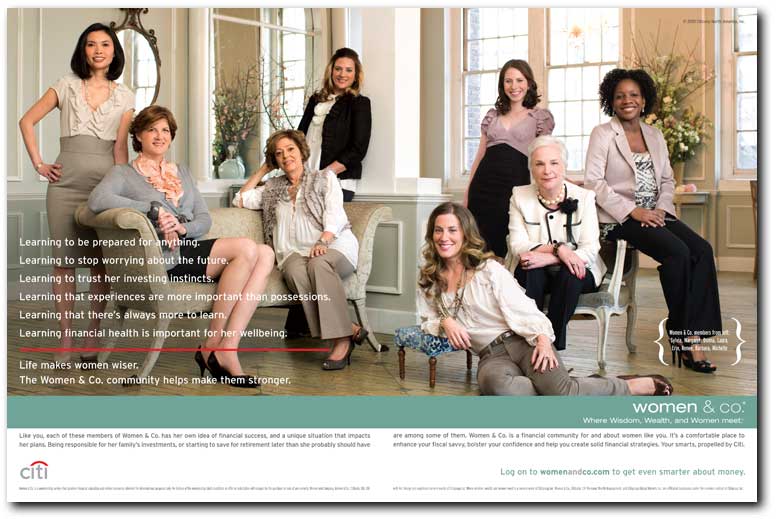
Find the film here: http://www.levjoy.com/blog/betterworld/
 This woman is as skinny as can be, has huge boobs, and basically is saying have sex with me. When a child or teen sees this, they think that this is normal and that this is what there body should look like. More than ever eating disorders are extremely common in children and teens. Also, when a guy sees this, they start to think all women should look like this. The media makes women an object rather than a person. Even in the above ad you never see the woman's face... just her skinny, sexy body.
This woman is as skinny as can be, has huge boobs, and basically is saying have sex with me. When a child or teen sees this, they think that this is normal and that this is what there body should look like. More than ever eating disorders are extremely common in children and teens. Also, when a guy sees this, they start to think all women should look like this. The media makes women an object rather than a person. Even in the above ad you never see the woman's face... just her skinny, sexy body.  If more actresses and models showed what they really looked like, they themselves wouldn't look perfect. Because of airbrushing of the photos, or even just digital design, there are so many ways to make an average person look flawless. I believe the media should start advertising real women in their campaigns because real women are beautiful, and they are what beauty truly means. Also, the media has undermined the actual product. Why can't the media just advertise that the product is good? Does there really have to be some sort of sex appeal to every ad?
If more actresses and models showed what they really looked like, they themselves wouldn't look perfect. Because of airbrushing of the photos, or even just digital design, there are so many ways to make an average person look flawless. I believe the media should start advertising real women in their campaigns because real women are beautiful, and they are what beauty truly means. Also, the media has undermined the actual product. Why can't the media just advertise that the product is good? Does there really have to be some sort of sex appeal to every ad?

 The advertisement here is for men's underwear, yet it shows a woman, barely dressed admiring his underwear. Even in an advertisement for men's clothing, a woman's body is shown off. Not only that but it is very clear that she just had sex with him and her underwear is shown to be somewhere else in the room. This kind of images show women as the submissive gender in our culture.
The advertisement here is for men's underwear, yet it shows a woman, barely dressed admiring his underwear. Even in an advertisement for men's clothing, a woman's body is shown off. Not only that but it is very clear that she just had sex with him and her underwear is shown to be somewhere else in the room. This kind of images show women as the submissive gender in our culture. Even this add which is trying to promote a vegetarian cause shows the woman as "human meat". Not only that but she is almost completely naked with blood on her. Even though this add isn't for a product, but instead a cause, it still shows a woman as objectified. The blood on her doesn't help. It shows a woman as a piece of meat not a a person who faced violence. Advertisements like this make violence seem more ok.
Even this add which is trying to promote a vegetarian cause shows the woman as "human meat". Not only that but she is almost completely naked with blood on her. Even though this add isn't for a product, but instead a cause, it still shows a woman as objectified. The blood on her doesn't help. It shows a woman as a piece of meat not a a person who faced violence. Advertisements like this make violence seem more ok. There are advertisements in which males show off their bodies. However, these advertisements are not nearly as common and provide a different message. This advertisement for a gym, shows the man as powerful, rather than the ads that make woman seem submissive. Even though it is showing an ideal figure for men as many ads show ideal figures for women, this ideal figure is not a submissive sex object, he is powerful and independent.
There are advertisements in which males show off their bodies. However, these advertisements are not nearly as common and provide a different message. This advertisement for a gym, shows the man as powerful, rather than the ads that make woman seem submissive. Even though it is showing an ideal figure for men as many ads show ideal figures for women, this ideal figure is not a submissive sex object, he is powerful and independent.







 According to Kilbourne young females in our Westernized society should either rebel or follow the rules. Is there any other way? What if I don't want to diet or rebel with black nail polish? What should i do? I can not call myself a feminist but I am far from depressed. Right now we, females, are living in a very strange society - everybody understands that the media is providing bad examples of the "IDEAL" shape, lifestyle, look, relations etc., but the media magnates do not want to do anything to change it. Where is the human factor? Is it all about money?
According to Kilbourne young females in our Westernized society should either rebel or follow the rules. Is there any other way? What if I don't want to diet or rebel with black nail polish? What should i do? I can not call myself a feminist but I am far from depressed. Right now we, females, are living in a very strange society - everybody understands that the media is providing bad examples of the "IDEAL" shape, lifestyle, look, relations etc., but the media magnates do not want to do anything to change it. Where is the human factor? Is it all about money?

 http://www.fun.net.pl/Zabytki_From_Hell/2004/2004-05-26/Group_sex.jpg
http://www.fun.net.pl/Zabytki_From_Hell/2004/2004-05-26/Group_sex.jpgThough they say women and men are now equals, it is obvious that sexism is still a big part of our culture from looking at our ads. These ads represent “a kind of statement on what it means to be a woman in this culture” (Kilbourne). In these ads, women are chosen to represent objects or animals rather than being human beings.
Below is an ad that shows a woman whose only purpose is to please and be a beer stand. The advertisers compares the beer to a woman, an object that can be shared with friends. I chose this ad because it basically says how useless a women is as a human being. This is common in ads where women are depicted to be an object whose only purpose is to please men.
What ads should focus on is the quality of their product rather than using sex to sell the product. As an alternative to the previous ad, the one shown below focuses on why their beer is good. The ad does not show a naked women but rather ordinary people enjoying the beer they are advertising.
“Advertising sells […] values” (Kilbourne), and the values that are being promoted in today’s culture are sexist, putting power into the hands of men. Advertising “tells us who we are and who we should be” (Kilbourne) and these ads tell women to be items. There are serious consequences when women are promoted to be mere objects. Women feel devalued, that they rather exist to serve men than live alongside them.
Kilbourne states that objectifying women is the “first step in justifying violence”. Domestic violence has been an issue that still exists in an age where both genders are entitled to the same rights. These advertisers are not just promoting their products, they are also promoting sexism and violence. Advertisers should focus on the selling points of their product instead of using sex to sell.
The use of sexuality has become overtly pervasive in our society. Even ads that are targeted for the younger generation are starting to be plagued with sexual connotations.

I found this Lego ad particularly disturbing. Especially since Lego is a Danish company that sells children’s toys that consists mainly of plastic building blocks and bricks. In this ad, the first thing you notice is the emphasis on this woman’s chest. Her cleavage is censured and perhaps too graphic to show. The seductive look on her face with her gaze directed at the male suggests that she wants to lure the man onto the bed. Her hand is placed on the bed implicating that she’s not going anywhere. This male’s hand is placed strategically near his hip, insinuating that he’s about to drop trou but hesitates as he looks at the woman on the bed with admiration.
Now this is a Lego ad. Why is Lego, a children’s toy company promoting this kind of ad in the first place? Kids shouldn’t watch too much TV, that’s why. This ad has nothing to do with the promotion of Legos. Just a clear and provocative message to children and adults, whatever you watch on TV, just don’t watch too much of what’s going on this ad.
When we think of diapers, we associate them with infants and toddlers. I happened to stumble upon a diaper ad that just happens to sell diapers in a very unconventional way. What I found especially convoluted about this South Korean diaper ad promoting Good Nites pull-ups was a toddler with a glistening chest of body oil selling more than just diapers. The look in the male toddler’s eyes is quite provocative with him holding a rope around his torso. I think the main purpose of the ad was to show customers how great the diapers on the toddler looked and that this is how your toddler can look with them on too. Although this ad serves as a parody of the David Beckham Armani underwear ad on the right, it has potential child molesters and pedophiles thinking something else.

Although the media is known to promote their ads with young, svelte and sexy looking women, a new wave of curvier women has started to embrace the ads in many glossy magazines. A classic example of this is Dove’s Campaign for Real Beauty and Self-Esteem Fund, which features a wide diversity of realistic and fuller voluptuous looking women posing in their underwear who deviate from the mainstream Victoria’s Secret model body type.


In recent years magazines such as Seventeen and Glamour have begun to feature full-figured models in their spreads. The popular teenage magazine, Seventeen has even featured the “curvy” winner of America’s Top Model, Whitney Thompson on their cover. To help developing girls enhance their self-esteems, Seventeen has even launched a self-esteem campaign similar to that of Dove’s Self-Esteem Fund, called the Seventeen Body Peace Project to help young developing girls feel proud of their bodies, no matter what their shape or size.
In the future, more ads should feature more realistic looking woman, so that there will be more appreciation for fuller-looking women which will allow many people to gradually change their unrealistic views about women needing to looking stick skinny in order to be deemed attractive. Curvier women can just be as appealing as skinner women if not more so.


Picture Sources:
Women and the Advertising Age
Media advertizing is one of the greatest means of selling a product as it continuously influences the culture we live in today. In killing Us Softly, the message of speaker Jean Kibourne is very clear. She reviewed how and whether the image of women in advertising has changed over the last 20 years. Nowadays we live in a society where women are considered and viewed as objects rather than subjects. Women’s bodies are regarded as things and in most ads parts of that thing is what is most focused on.

Another thing that advertizing brings is the idea of sexism and physical perfection. Nowadays we have computers that allow us access to high scale of technology, one gets a handful on creating the ideal perfect female that is flawless and has no lines or wrinkles anywhere. One can easily Photoshop and airbrush any picture and make perfection. But with every benefit comes a great deal of drawback. On the one hand, one has created and is showing the perfect and ideal beauty of a woman or who and how a woman should be while it degrades more than the majority of women who do not look like that ad. Not only it leads female to low self esteem but it creates a generation of female that will do anything to look like that computer made physical perfection and that can generate from plastic surgery to buying useless products. Another thing that it ultimately creates is the idea that if you are not looking as perfect as the woman on that ad, chances are you just not trying hard enough and that not only challenges them to want to take the extra step as they loose sensations by becoming an object of someone else’s pleasure but it raises questions on the minds of men about the real woman they are with. Another interesting aspect of the advertising Age that is mentioned several times in killing us softly is the fact that these sexist advertisements is that they create an arena for racism and labeling women of color as animals, which automatically dehumanizes them. In some cases they are literally shown dressed in animal prints and leopard skinned clothing.

To better explain this I chose to show this picture of supermodel Naomi Campbell that was taken by photographer Jean-Paul Goude in 2008.
http://fashionbombdaily.com/2009/08/13/caged-black-women-grace-jones-amber-rose/
Clearly in this picture, one can understand what Kibourne was explaining when it comes to making women other than humans but more specifically dehumanization of women of color who are far removed from white and therefore closer to the supposed animals their ancestors roamed with, and that is the Africans in Africa before slavery.
sources: http://fashionbombdaily.com/2009/08/13/caged-black-women-grace-jones-amber-rose/


 aying her as a bottle, in JP Morgan advert her image is covered by slogan to encourage and inspire other women to come and be successful as she is.
aying her as a bottle, in JP Morgan advert her image is covered by slogan to encourage and inspire other women to come and be successful as she is. source: 2.bp.blogspot.com
source: 2.bp.blogspot.com Budweiser beer lids, and only cover her important and private area by few beer lids. She is holding Budweiser beer with her left hand. What does the advertiser first attract me is the sexy body of the woman. I am sure others will do the same thing too. Second, I realized this is a beer advertiser after I saw she is holding a glass of beer in her left hands. Now, the woman has become more important and central than the beer. It looks like the advertiser is selling the sexy lady instead of beer. Furthermore, I think this advertiser is overload, and it must affects
Budweiser beer lids, and only cover her important and private area by few beer lids. She is holding Budweiser beer with her left hand. What does the advertiser first attract me is the sexy body of the woman. I am sure others will do the same thing too. Second, I realized this is a beer advertiser after I saw she is holding a glass of beer in her left hands. Now, the woman has become more important and central than the beer. It looks like the advertiser is selling the sexy lady instead of beer. Furthermore, I think this advertiser is overload, and it must affects  In the second image, there is a naked woman bended her knees on grass, and she was trying lie back. She wears nothing on her body, except a high heel. We can also see that she just got tan due to her bikini shadow. I do not like this advertiser at all. I cannot see the girl in the image brings us any idea of the alcohol! Besides, the position of the lady is not making any sense at all. It just looks so weird to me.
In the second image, there is a naked woman bended her knees on grass, and she was trying lie back. She wears nothing on her body, except a high heel. We can also see that she just got tan due to her bikini shadow. I do not like this advertiser at all. I cannot see the girl in the image brings us any idea of the alcohol! Besides, the position of the lady is not making any sense at all. It just looks so weird to me.